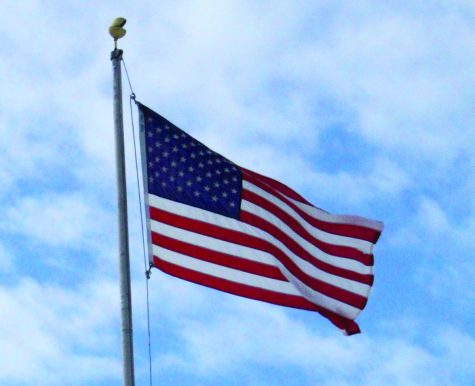Honoring 50th anniversary of Wilderness Act
December 27, 2014
The Wilderness Act was created in 1964 by the National Wilderness Preservation Society, granting protection to over 9.1 million acres of wilderness coast to coast immediately. This act has had a tremendously positive impact on all U.S. citizens.
This year marks the 50th anniversary of the law. These designated “wilderness areas” contain no roads, vehicles or permanent structures, along with no logging or mining. Even after 50 years, the Wilderness Act has continued to be a point of disagreement, from citizens being unhappy over the increased amount of federally protected land to loggers and miners being upset over locked up natural resources.
Today the wilderness system includes over 750 wilderness areas, 109,511,966 million acres protected and wilderness areas in all but six states (Connecticut, Delaware, Iowa, Kansas, Maryland and Rhode Island) according to the Wilderness Preservation Society.
“I believe we have a profound fundamental need for areas of the earth where we stand without our mechanisms that make us immediate masters over our environment,” said Howard Zahniser, the author of the Wilderness Act. The Wilderness Act has done just that, it has created wilderness areas across the country and encouraged the preservation of our country’s natural treasures.
I believe we have a profound fundamental need for areas of the earth where we stand without our mechanisms that make us immediate masters over our environment
— Howard Zahniser
In Minnesota alone there are three wilderness areas: the Agassiz Wilderness, the Boundary Waters Canoe Area Wilderness and the Tamarac Wilderness. The Boundary Waters was one of the first areas to be deemed a wilderness area under the Wilderness Act.
The Wilderness Act said, “A wilderness, in contrast with those areas where man and his own works dominate the landscape, is hereby recognized as an area where the earth and its community of life are untrammeled by man, where man himself is a visitor who does not remain.”
The Boundary Waters (BWCAW) has been a true wilderness throughout history, being virtually untouched by man: no logging, mining or motorized access. The BWCAW consists of over 1 million acres of pristine backcountry with about 1500 miles of canoe routes and more than 2000 campsites. This exquisite land is visited by approximately 200,000 outdoor enthusiasts each year.
When describing the BWCAW, author of Canoe Route to Fishing Adventure, Roger Drayna said, “How can one sum up this wild and lonely land? There is no easy way. It must be known in glory and adversity. In cold and wet and sun and wind. In sky lines and rock and surging water.”
While some criticize the Wilderness Act, the Act has had an immense influence on our nation. The preservation of the natural world was the initial reason why the law was created 50 years ago. Although the law has encountered some problems, such as mismanagement leading to unhealthy population sizes of both plants and animals making wildlands more susceptible to disease, the Wilderness Act has done an enormous amount of good for our country.
Aldo Leopold, a famous naturalist, coined as the “father of ecology” once said, “For unnumbered centuries of human history the wilderness has given way. The priority of industry has become dogma. Are we as yet sufficiently enlightened to realize that we must now challenge that dogma, or do without our wilderness? Do we realize that industry, which has been our good servant, might make a poor master?”














Kyle Alvarez • Jan 20, 2015 at 3:42 pm
The fact that the lead started with a link really drew me into the article. It provided a lot of information of the Wilderness Act, and was overall a very interesting article!
Sam Buckrey • Jan 12, 2015 at 10:57 pm
This article gave information on the Wilderness Act, and why it is important. I like how you tied places from Minnesota that are within the act. Good job.
Anna Craggs • Jan 7, 2015 at 1:52 pm
Very good and long detailed quotes. Also your facts have good informative statistics. I hope that the act spreads to those last six states that it doesn’t apply to currently.
Sarah Junko • Jan 6, 2015 at 12:27 pm
This article gave great information and explained what the Wilderness act is very well. Its has great supporting quotes and facts. Great Job!
Jordan Fulin • Jan 4, 2015 at 2:37 pm
This article did a fantastic job explaining the importance of the Wilderness Act. It included a great amount of detail and your quotes supported your article. Good job!